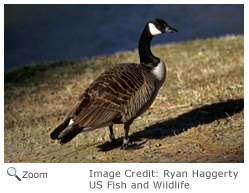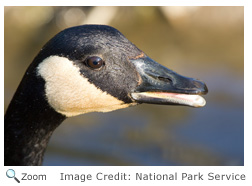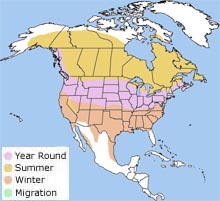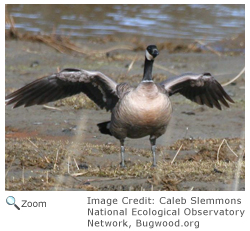Canada Goose - Branta canadensis |
||||||||||
Description
Range
HabitatThe Canada goose is found in a wide variety of habitats including lakes, bays, rivers and marshes. It often feeds in open fields and grasslands.
|
DietOn land, the Canada goose eats a wide variety of grasses, including salt grass and Bermuda grass. It uses its bill to yank the grass out of the ground. It also eats corn, rice, and wheat. In the water, the Canada goose sticks its head and upper body under the water, stretches its neck out, and uses its bill to scoop up food from the mud and silt.
Life CycleThe female Canada goose lays her eggs between March and June. She lays between four to ten whitish eggs in a nest made of grass, reeds, and moss and lined with down. The nests are usually made on the ground near water. The female hatches the eggs and turns them over often to evenly heat them.
Behavior |
|||||||||
Audio Credit: xeno-canto.org Andrew Spencer |
||||||||||




 The Canada goose breeds and winters in most of Canada and the United States.
The Canada goose breeds and winters in most of Canada and the United States. 